On an autumn afternoon in Hanoi , in the colorful space of the Mid-Autumn Festival on Nguyen Thuong Hien Street, the children attentively listened to Mrs. Pham Nguyet Anh (born in 1949, on Dong Xuan Street, now Hoan Kiem Ward, Hanoi) tell stories about the old Mid-Autumn seasons and the rice flour seeds. The faint scent of sticky rice flour, mixed with the innocent chatter, made the space warm. On the long table, each handful of dough was kneaded by the children enthusiastically under the meticulous and patient guidance of Mrs. Pham Nguyet Anh.
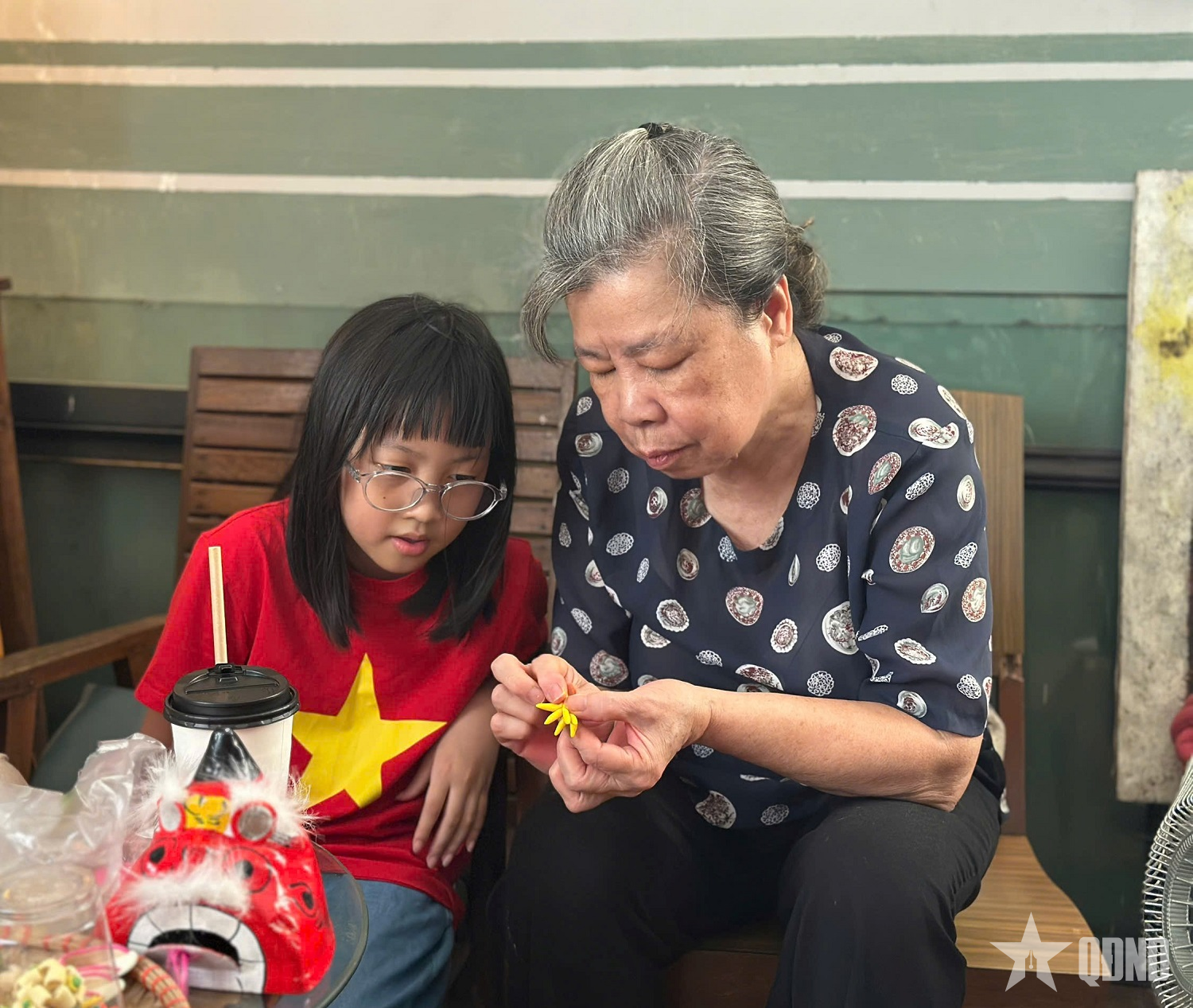 |
Meticulously molding a lion dance drum, Tran Anh Duc (born in 2016, in Cua Nam ward, Hanoi) excitedly said: "This is the first time I have molded a dough doll. I find it very interesting, I will make it beautiful to bring home as a gift to my parents". Not only children, many young people also try their hand at making dough dolls for the first time. Cam Anh (born in 1992, in Cua Nam ward, Hanoi) shared: "When I molded a dough doll myself, I understood the meticulousness, sophistication and difficulty of the job. I really admire Ms. Anh and hope that the young generation will continue to preserve these traditional cultural values".
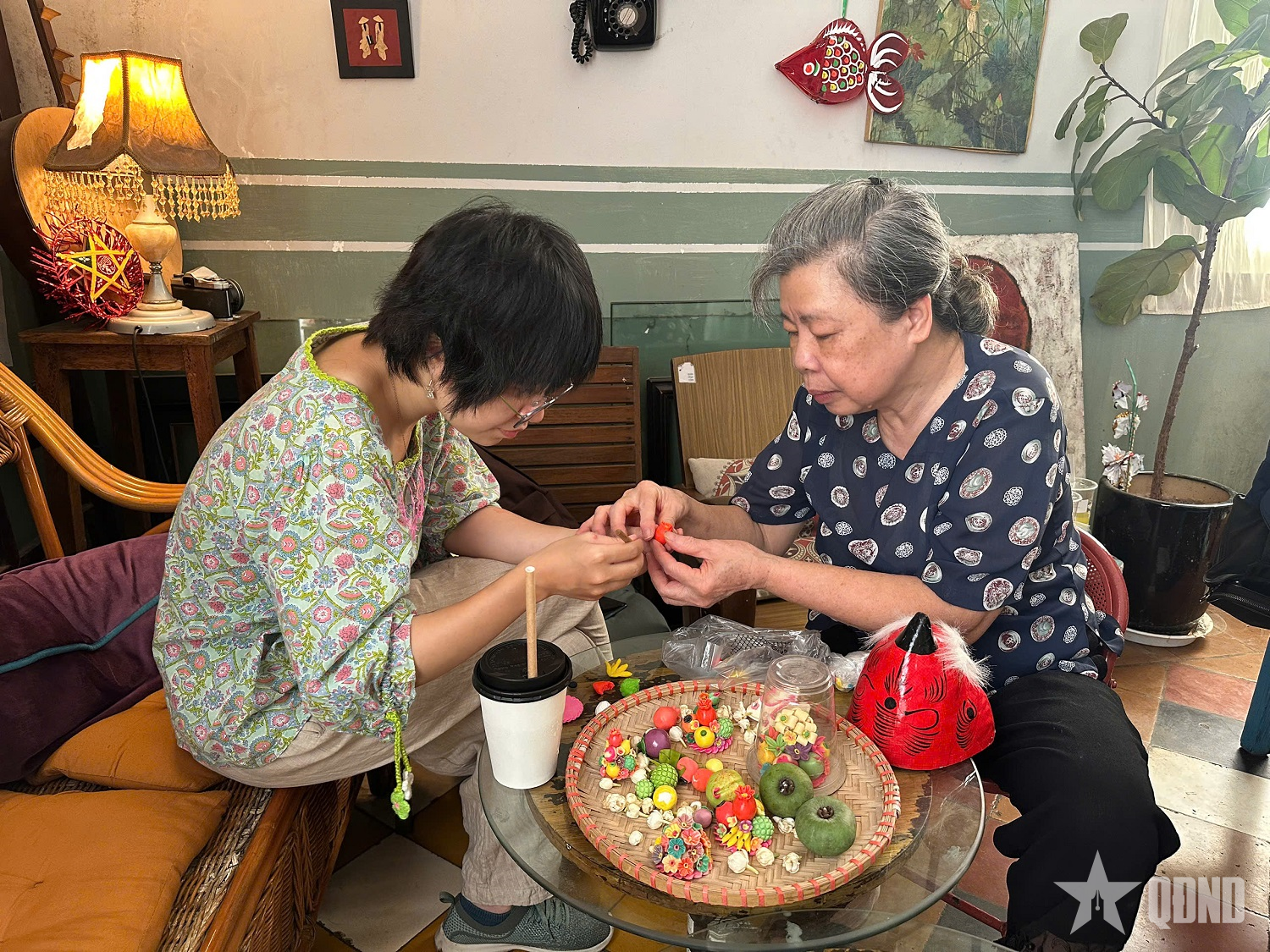 |
Looking at that excitement, Mrs. Anh was moved: "Even though I have been working with dough animals for 52 years, every time I personally mold each small shape, I still feel the same passion as the beginning. Now, being able to pass it on to the children, that joy is multiplied." Having said that, while quickly adjusting each detail of the dough animal, Mrs. Anh slowly told about her lifelong journey with the profession.
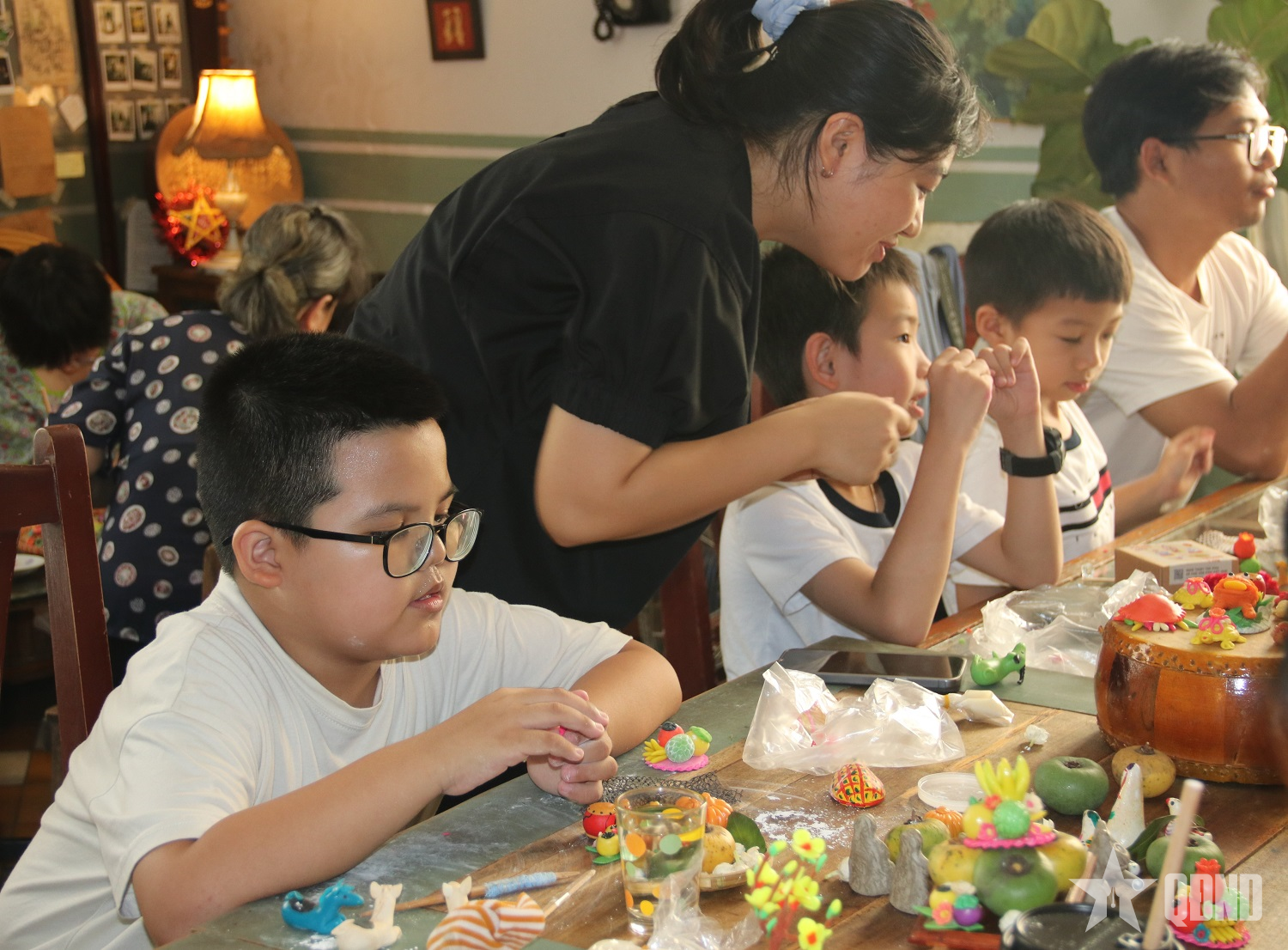 |
Mid -Autumn Festival in the old town
Ms. Pham Nguyet Anh grew up in a family that traded fruits and dough animals on Dong Xuan Street (now Hoan Kiem Ward, Hanoi). Her childhood was associated with the bustling atmosphere of the markets, where craftsmen from neighboring streets brought dough animals to deliver to the family. At that time, the craftsmen were afraid of losing their jobs and customers, so the family only acted as a distributor, but did not learn the trade.
“At that time, I was very fond of dough. Every time I went with my parents to get goods, I often stood for a long time in front of the colorful baskets of dough. Sometimes, I would ask for a piece of dough from the workers and knead it so much that it turned black,” she recalled.
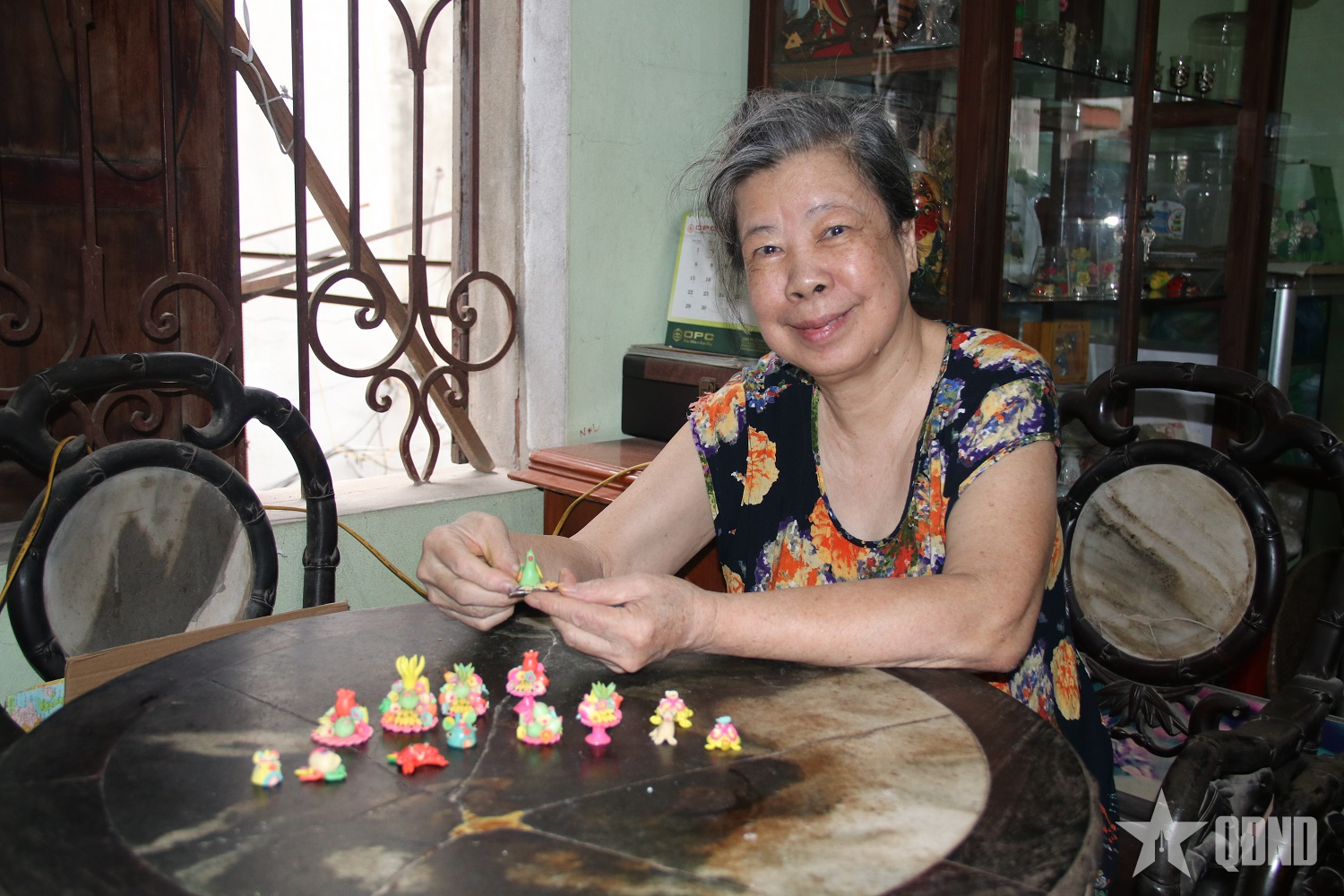 |
In 1965, when the US war of destruction against North Vietnam began, many craftsmen had to evacuate, the bustling atmosphere of the old town markets gradually quieted down. The craft of making dough animals, once a typical Mid-Autumn Festival cultural feature, began to fade away. At that time, Mrs. Anh's family was fortunate to have an acquaintance on O Quan Chuong Street (now Hoan Kiem Ward, Hanoi) pass on the precious dough making recipe. Her father was a skillful person, so he learned and tried to make them; at first he was clumsy, but gradually the products became known and ordered by many people.
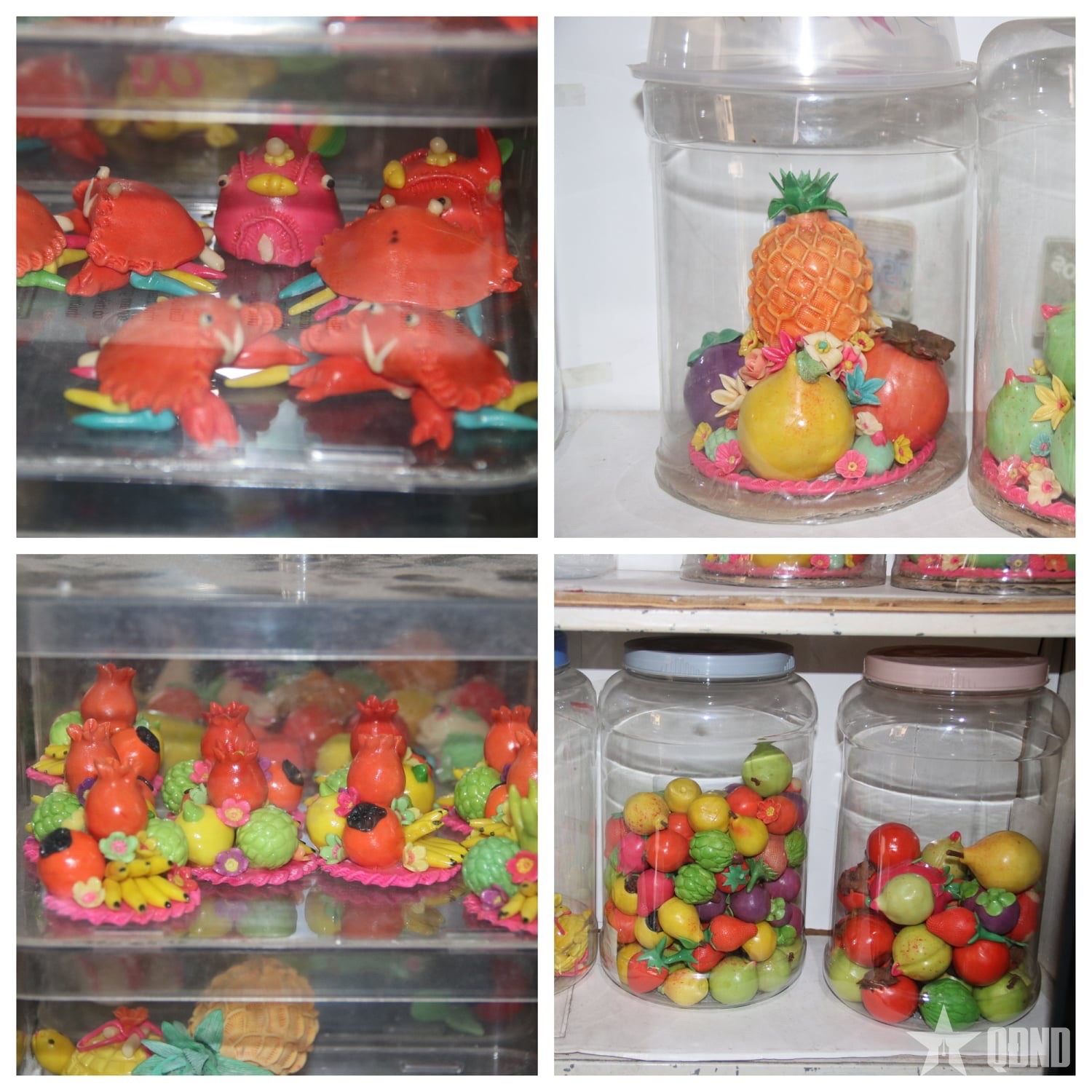 |
“The seedling farming business is seasonal and unstable. So, when I grew up, although I really liked it, I had to put it aside to work as a factory worker to support my family,” said Ms. Anh.
By 1973, when family life had stabilized, the love for dough balls from childhood urged Ms. Anh to return and continue the traditional job of making dough animals. In the early days of her career, because she had no education, Ms. Anh had to figure everything out herself. “The raw materials were hard to find at that time: the core of the fruit was usually made from sawdust mixed with glue, and after molding, it had to be dried in the sun for 2-3 days to harden. As for food coloring, it was limited, so to have rich colors, I had to mix it myself,” Ms. Anh recalled.
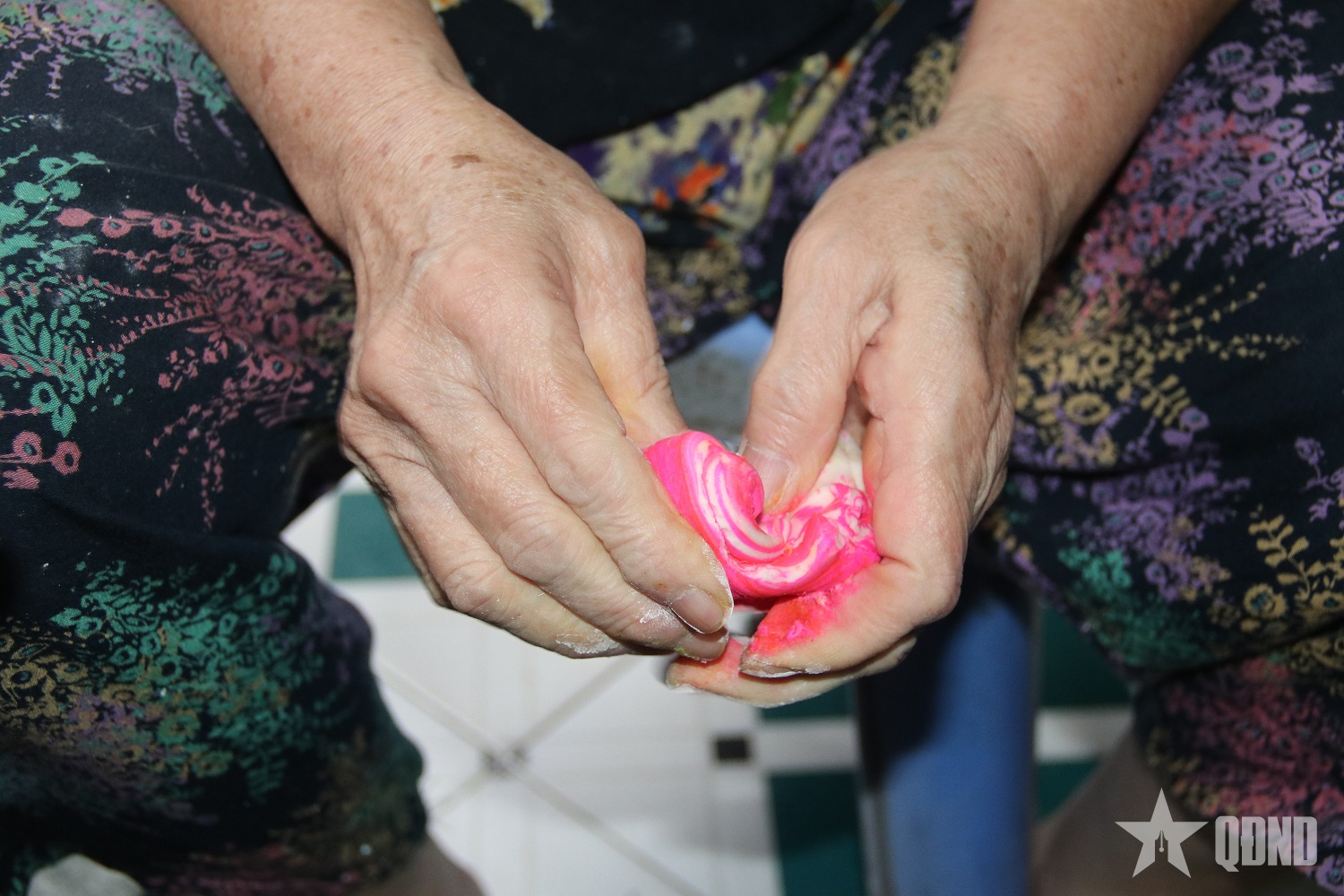 |
The process of shaping fruits is a laborious experiment. When making custard apples, she used to sit and meticulously draw each “eye”, until by chance a custard apple fell into the mesh of a laundry bag and printed out the uniform shapes. From there, she discovered that this method could be applied to shaping many other fruits, saving time while still being sophisticated.
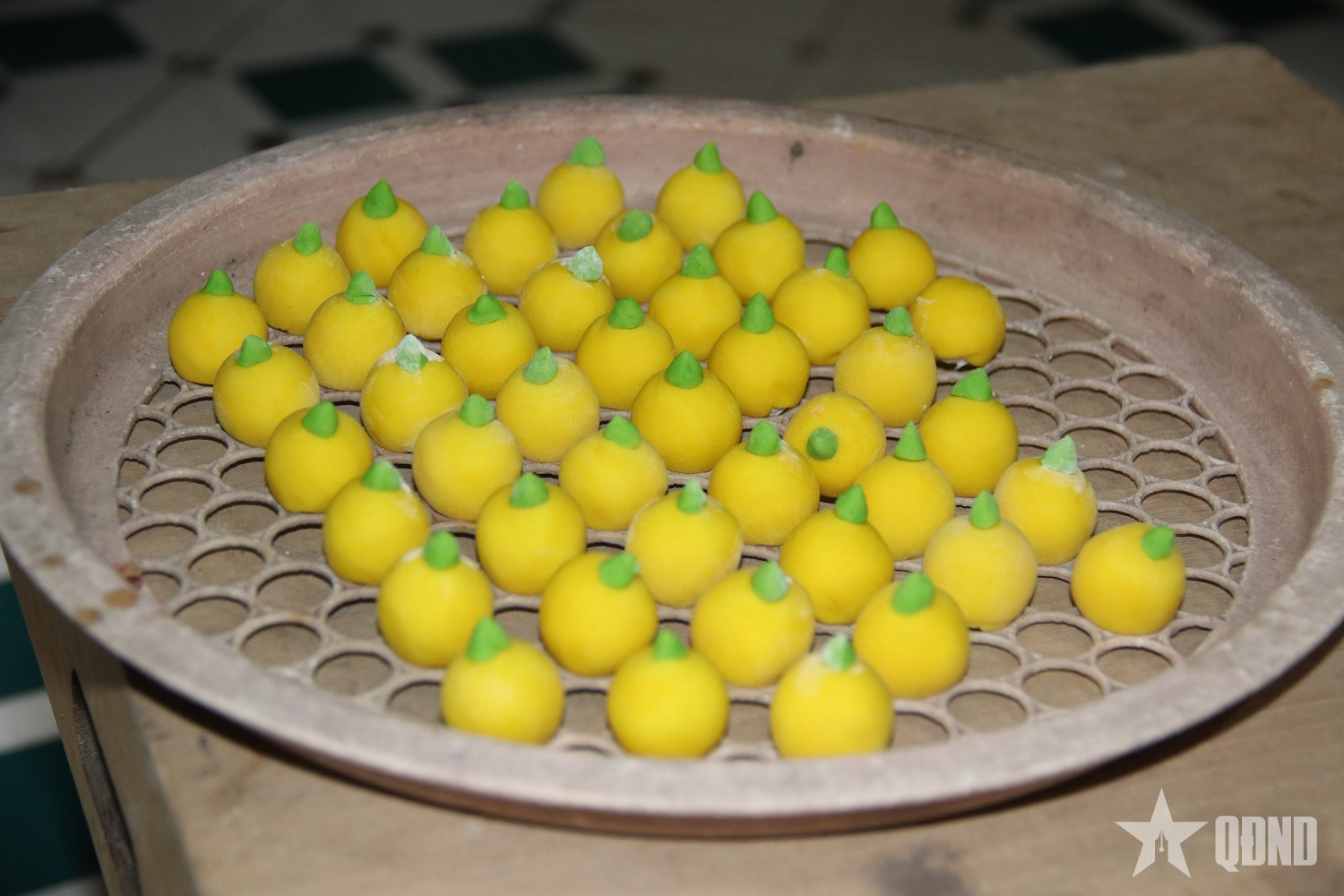 |
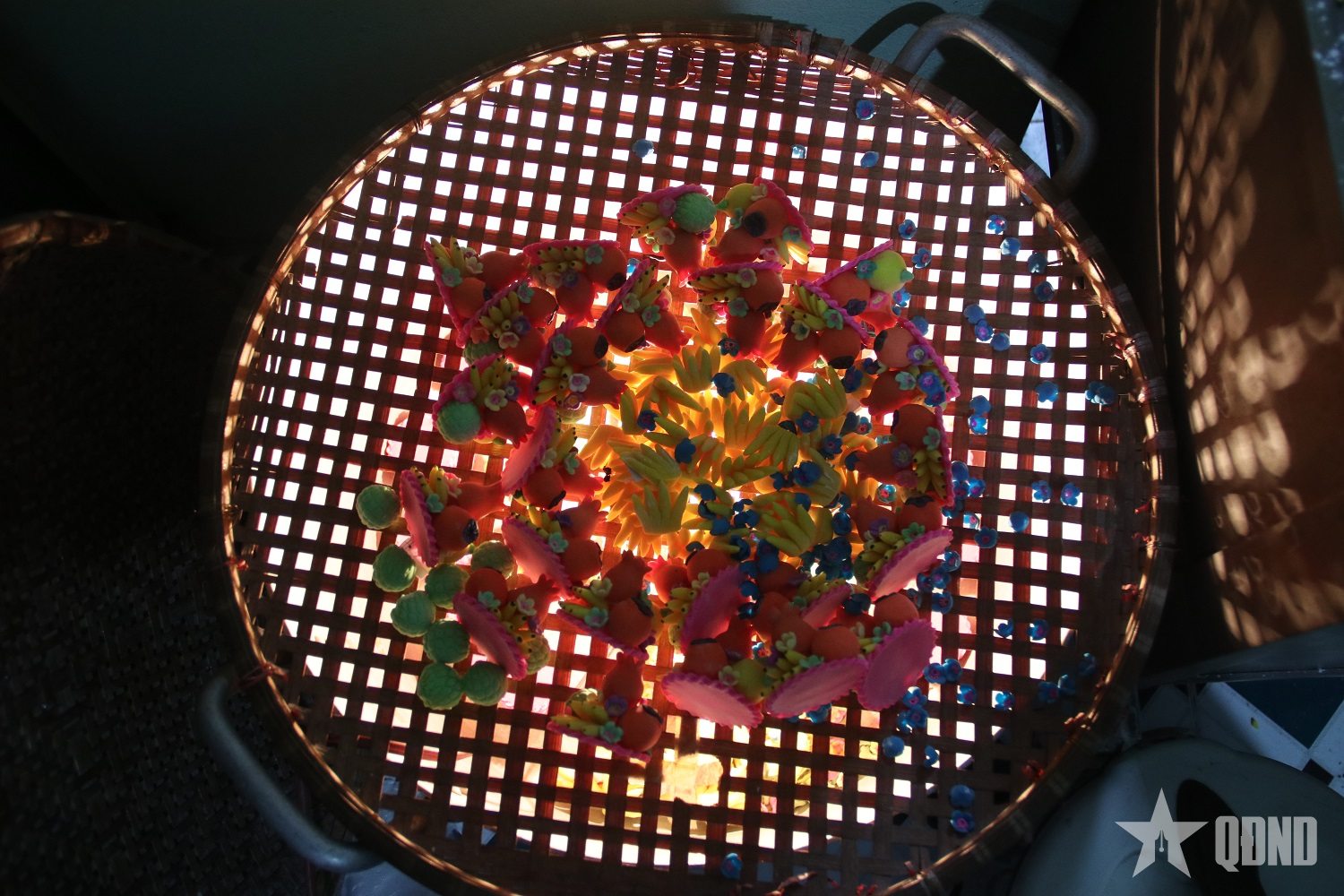 |
| Nowadays, thanks to technology, the drying process is done by machine, but the kneading, molding, and shaping steps are still manual, ensuring the product is both durable and sophisticated. |
“I am not good with my hands, so at first, everything was confusing. But because of my passion, I kept doing it, and if I failed, I would do it again. Step by step, I was able to create sophisticated shapes that many people loved,” Ms. Anh proudly said.
At first, she molded familiar Mid-Autumn figurines such as: Goldfish, star lanterns... In the context of the subsidy years, buying offerings became difficult, she not only made Mid-Autumn toys but also created fruit trays from dough to serve the worshiping at temples, pagodas or shrines of many customers. The fruit trays she created were made in real size, from bananas, grapefruits, oranges, sapodillas to papayas. Each color was delicately coordinated, the lines were meticulously cared for, making many people standing close still think they were real fruits.
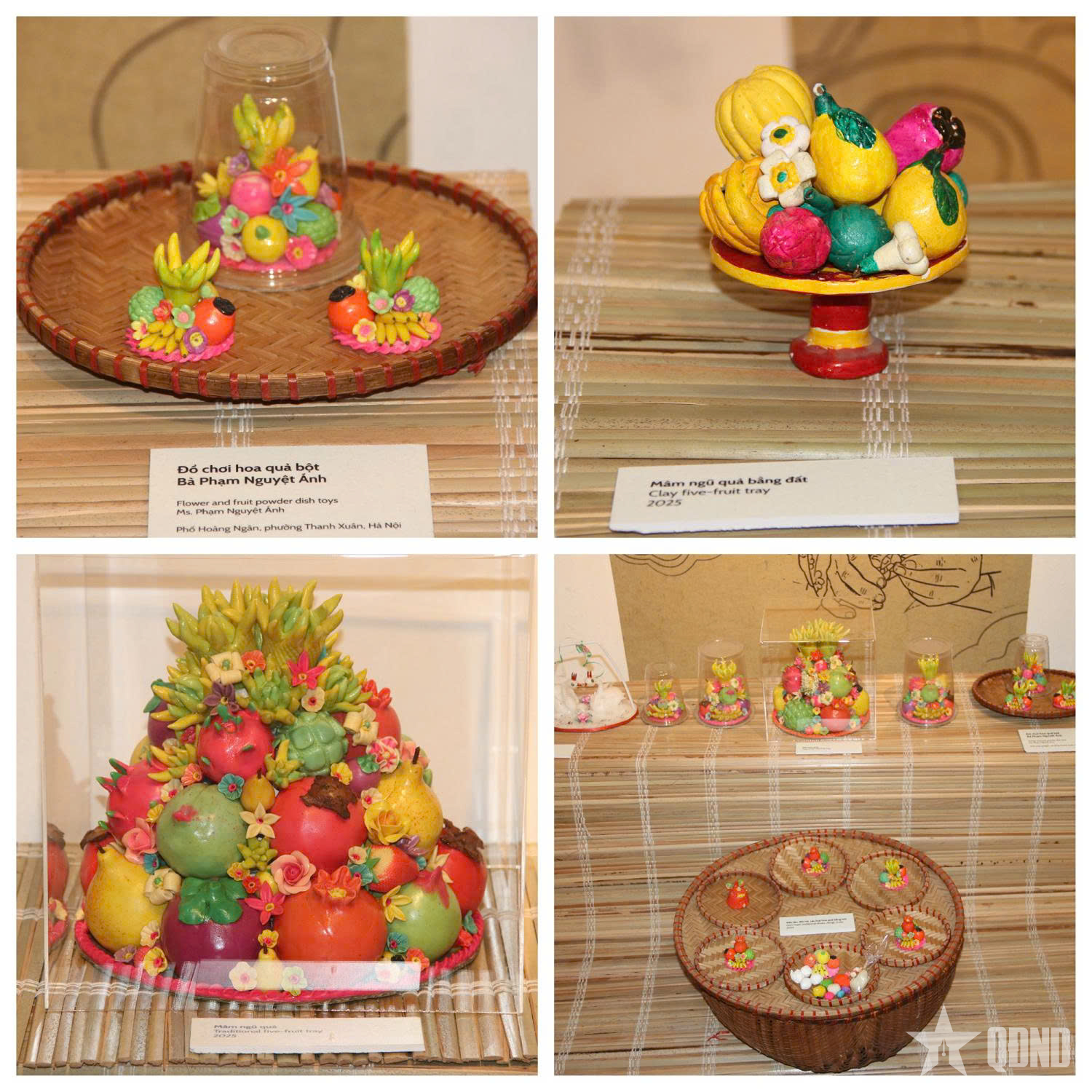 |
Ms. Anh's products are displayed at the Museum of Ethnology on the occasion of Mid-Autumn Festival. |
In 1999, Ms. Anh's family left Dong Xuan Street and moved to Hoang Ngan Street (now Thanh Xuan Ward, Hanoi). Despite the change of residence, people still regularly come to buy products and ask their children to try making dough animals. "Those moments make me more determined to preserve the traditional craft, so that the spirit of the Mid-Autumn Festival in the old town will not be forgotten," Ms. Anh emotionally shared.
Preserving the essence of the moon season
Up to now, after more than half a century of working with dough animals, but in each story, each dough kneading operation or the way Mrs. Anh preserves her works, I can still see the same passion as in the beginning. Visiting Mrs. Anh's house on Hoang Ngan Street (Thanh Xuan Ward, Hanoi), I was impressed by her room which is always full of colorful fruits trays or fish, chickens, custard apples, and persimmons made of sticky rice flour.
While talking to me, Mrs. Anh took the key, opened the glass cabinet, gently took out a small iron box. Inside were powdered animals such as: crabs, flowers, custard apples, pears,... that she had cherished for many years.
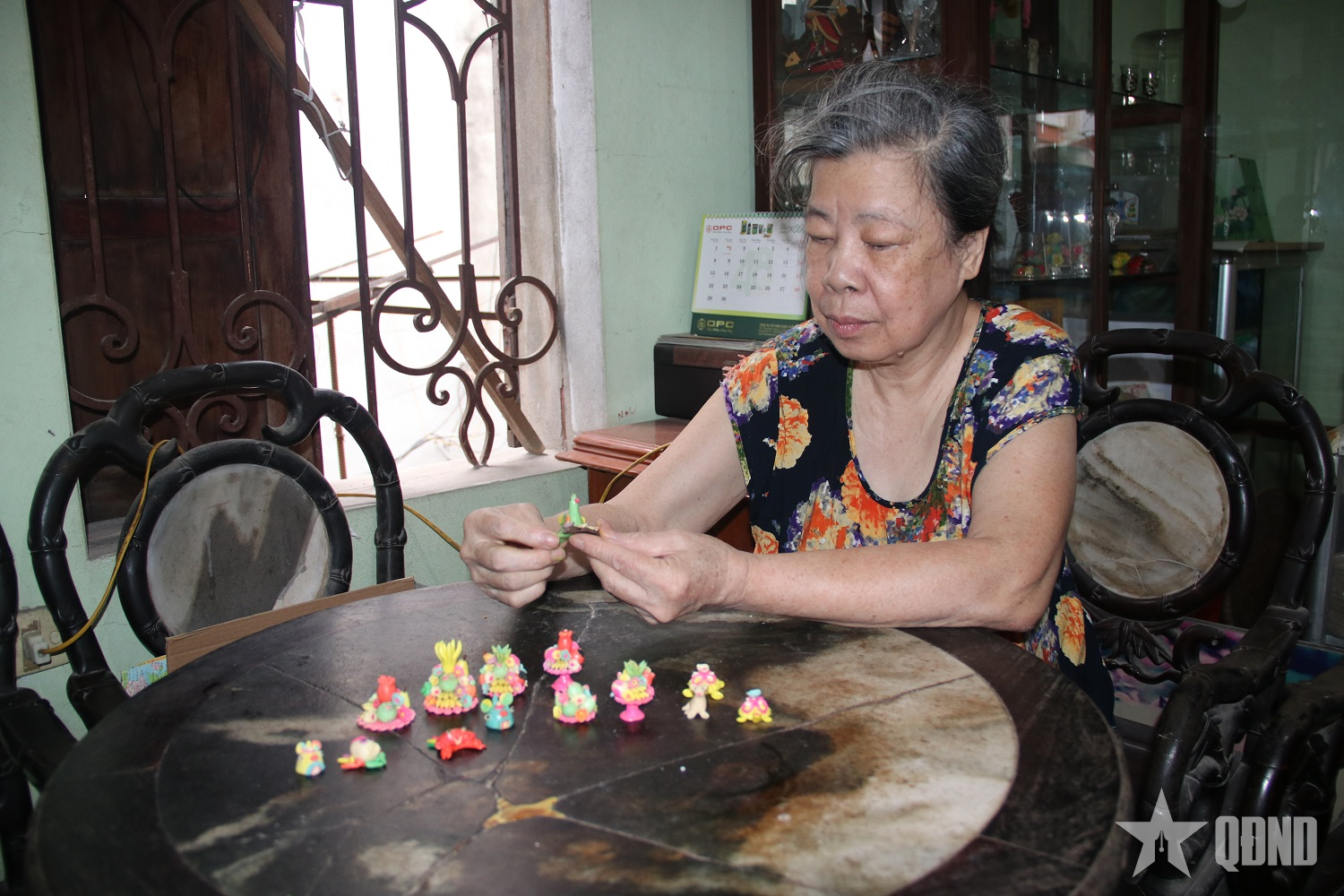 |
Arranging each of the dough pieces on the table, she said: “Looking at them, I remember the old Mid-Autumn seasons, remembering my little hands molding a goldfish for the first time, remembering the hours of trying again and again to get the right shape of a custard apple or a pear. Just looking at them is enough to make me happy, feeling that my life is attached to the dough, to the job, without ever getting bored. To me, each dough piece is like a treasure, each detail, each line carries a story, memories and love for the job,” Ms. Anh confided.
The joy of seeing dough balls turn into vivid animals every day is still present, but in Mrs. Anh's eyes, she could not hide her concern about the future of the traditional profession. In 2000, the dough toys she made sold very little because they could not compete with imported toys. However, to maintain the profession, every year, on the occasion of the Mid-Autumn Festival, she still brought her products to sell at Hang Ma Street, Dong Xuan Market (now in Hoan Kiem Ward, Hanoi City). Currently, Mrs. Anh is the last person to preserve the traditional craft of making dough animals in Dong Xuan, while the number of young people learning to make dough animals is decreasing. The story of preserving the profession, therefore, becomes more urgent, requiring continuity and dedication so that the traditional spirit of the Mid-Autumn Festival does not fade away.
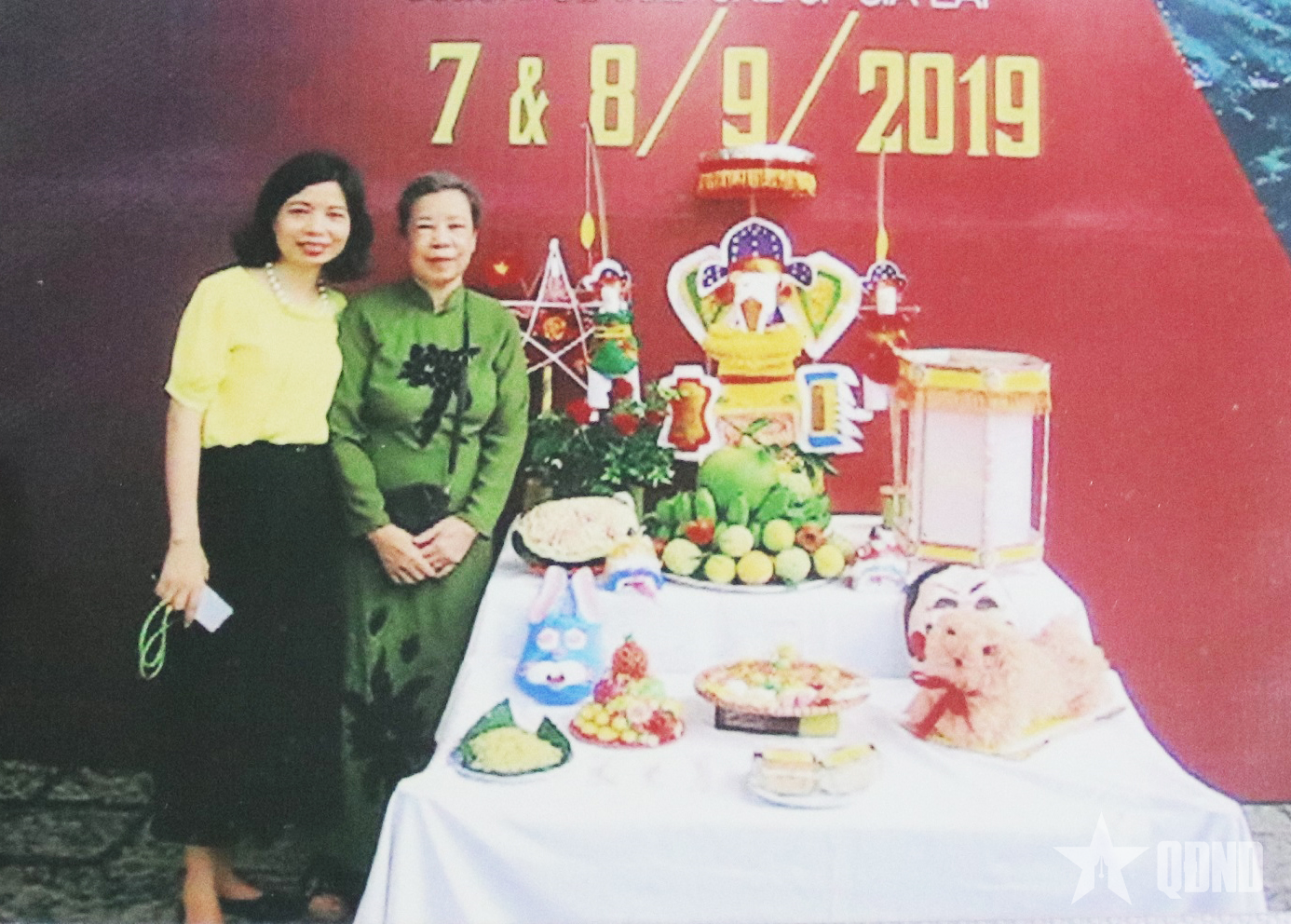 |
Photo: Character provided |
Concerned about this situation, Ms. Anh always devotedly participated in workshops and seminars on dough animals. Especially, from 2006 to now, every Mid-Autumn Festival, Ms. Anh has come to the Museum of Ethnology to teach dough animals. Here, she patiently guides young people step by step in kneading, shaping dough and shaping products. For those who are truly passionate, she is willing to teach them every detail.
Thanks to her experienced hands, new hands gradually formed, keeping the traditional Mid-Autumn spirit through the dough figurines in the old town never extinguished. In particular, in 2012, under the guidance of Ms. Pham Nguyet Anh, combined with the memories, sketches and research of researcher Trinh Bach, young artisan Dang Van Hau (born in 1985, in Phuong Duc commune, Hanoi) restored the old Hanoi dough figurines, opening up hope for the continuation of the traditional craft.
Mrs. Anh squeezes persimmons to put on the fruit tray. Video : Hai Ly |
| Mrs. Anh molds custard apples to put on the fruit tray. Video: Hai Ly |
Ms. Pham Thu Hang (daughter-in-law of Mrs. Pham Nguyet Anh) said: “Each dough animal looks simple but is actually very difficult to make, especially the step of mixing the dough to get beautiful colors. My mother always wanted to pass on the profession, and whoever came to learn was enthusiastically taught step by step by her.”
In a small house on Hoang Ngan Street (Thanh Xuan Ward, Hanoi), an old woman nearly 80 years old is still diligently preserving Dong Xuan flour seedlings. Each handful of rustic flour through Mrs. Anh's hands gradually turns into fish, chickens, custard apples, and bright persimmons, carrying the spirit of the old Hanoi Mid-Autumn Festival. After more than half a century of working in the profession, she has not only maintained the sophisticated technique but also preserved the memories and colors of the traditional Mid-Autumn Festival. Every time she hands over the meticulous operations to the young generation, she seems to give the breath of the moon season, reminding them that the Mid-Autumn Festival is not only an occasion for fun, but also a moment when traditional cultural values are revived, where flour seedlings, folk toys, and childhood memories continue through each moon season, bright and lasting.
Article and photos: TRAN HAI LY
Source: https://www.qdnd.vn/phong-su-dieu-tra/phong-su/nguoi-hon-nua-the-ky-giu-hon-trung-thu-qua-con-giong-bot-849330










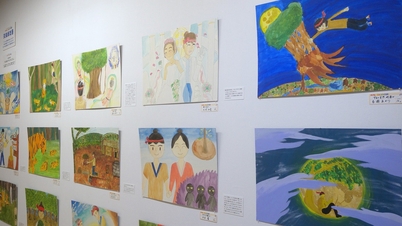






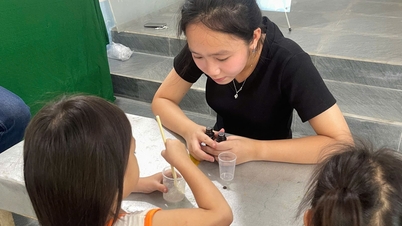

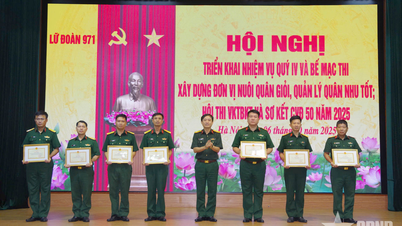


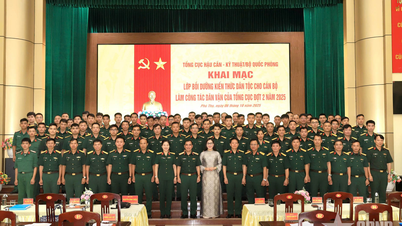






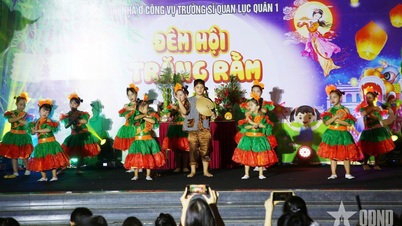




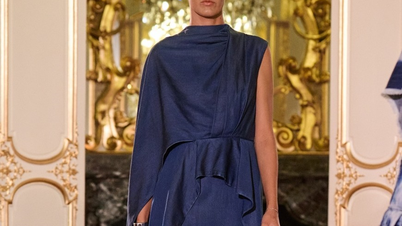













































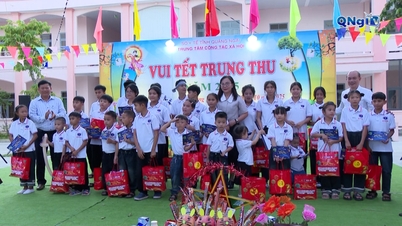

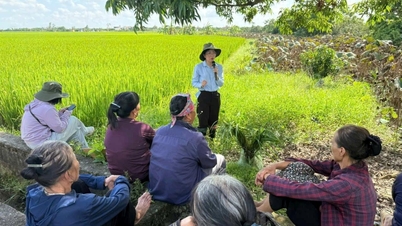





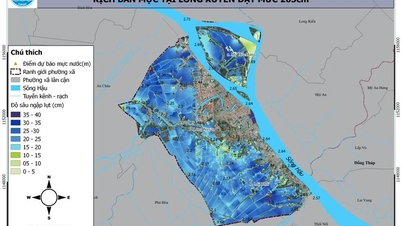

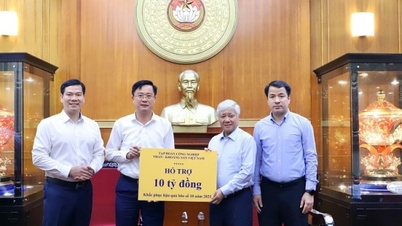











Comment (0)